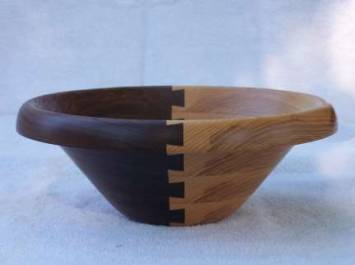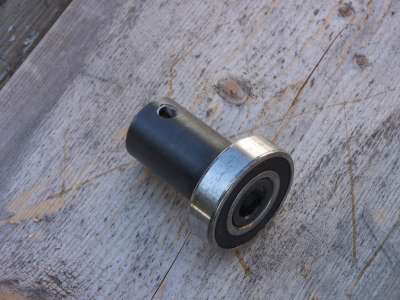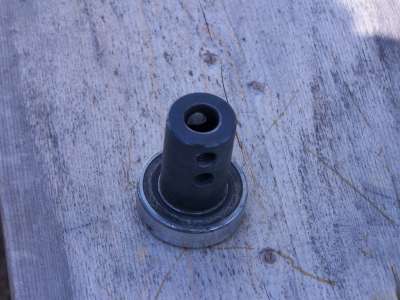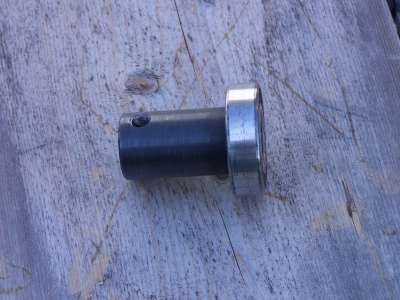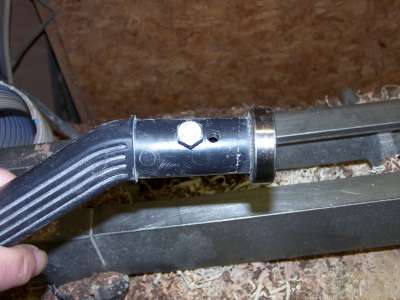Lightweeder, since the wing "droops" then cutting the underside of it is the same cut as you make when hollowing a bowl, cutting from rim to center. The cuts from the foot to the highest point of the underside of the wing are the same as you make when turning the outside of a bowl, cutting from foot to rim. If you were turning a round bowl with a large, overhanging rim that had a deep finger groove under it, like this horrible example:
you would form the finger groove the same way, cutting inward from the rim and outward from the bowl wall. On the top surface of the wing it is the opposite, where the the cut from the highest point of the rim out the the corner is like turning the outside of a bowl and the cut from the high point to the center is turning the inside. The cuts I was using to remove the bulk of the waste were all pretty much parallel to the face of the blank so can be made in either direction.
Paul, the Nova vacuum adaptor is a pretty simple piece:
It actually has three holes in it. I am not sure what the third hole (on the opposite side) is for. Here is a picture of it mounted in the end of my shop vac hose:
You can see the bypass air hole to the right of the securing bolt, which seems to be way oversized for the application.

The bearing just slips into the recess in the outboard hand wheel and is secured by a set screw which tightens against the outer race.
Wizer, my shop is a disaster area with a narrow path through the junk between the door and the lathe. I would need a week to get it cleaned and organized enough to be willing to take pictures.

Take care
Bob

































